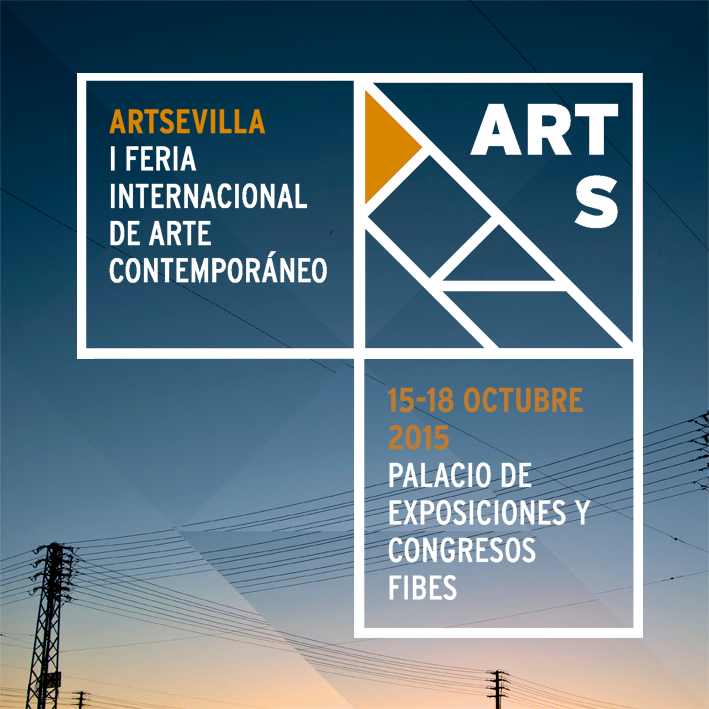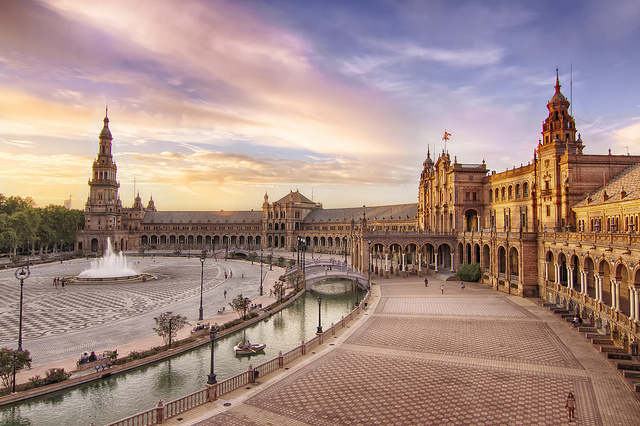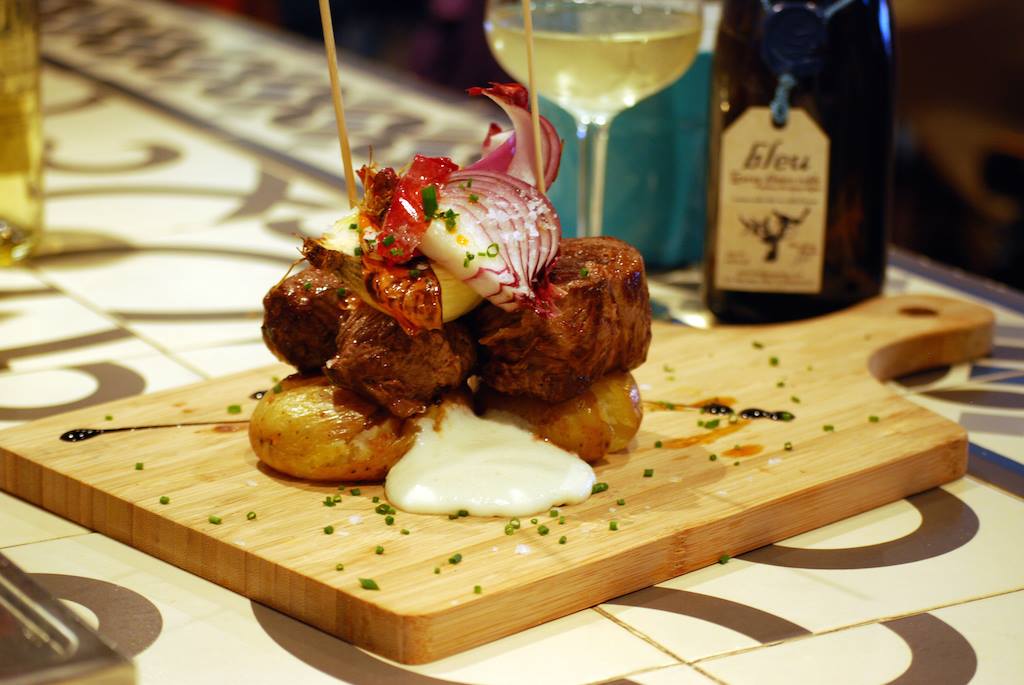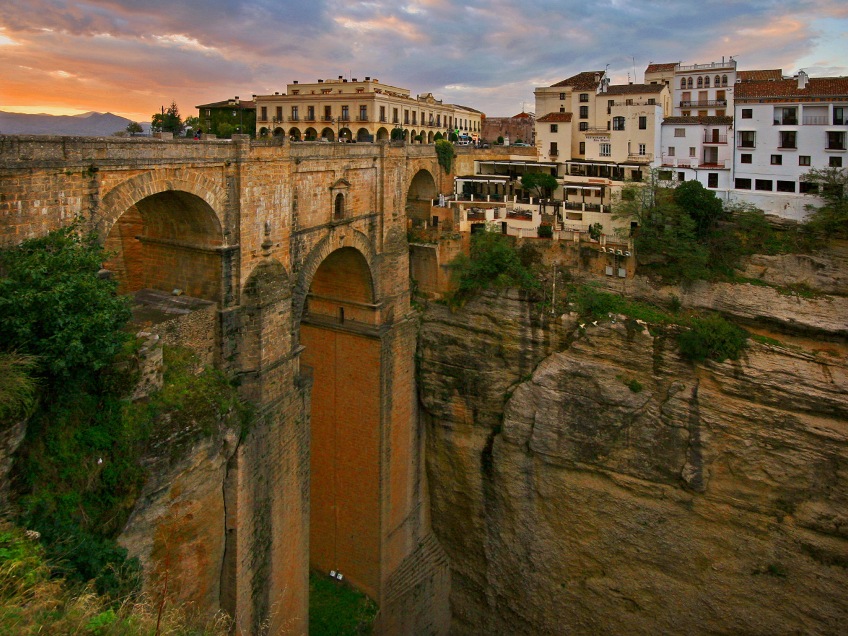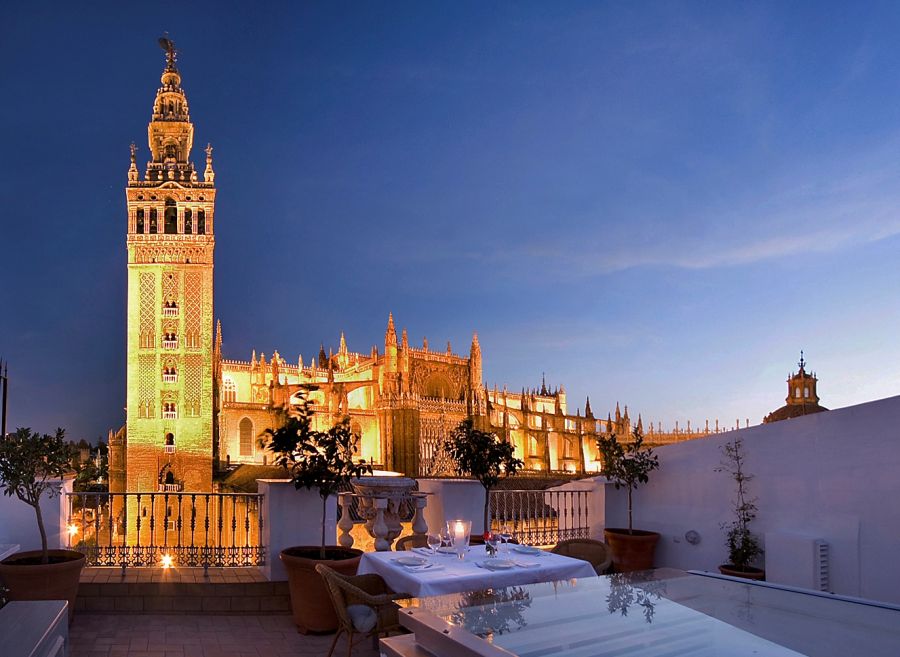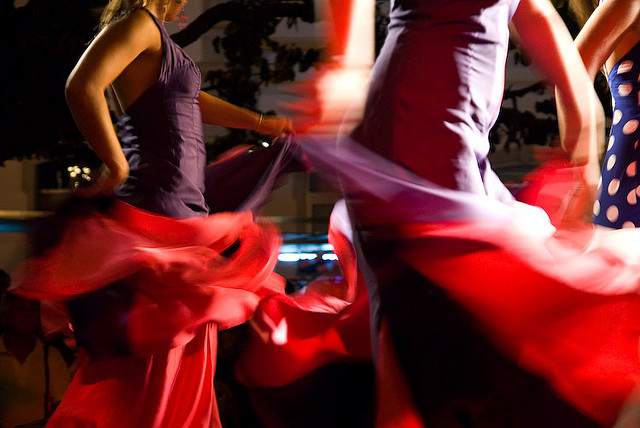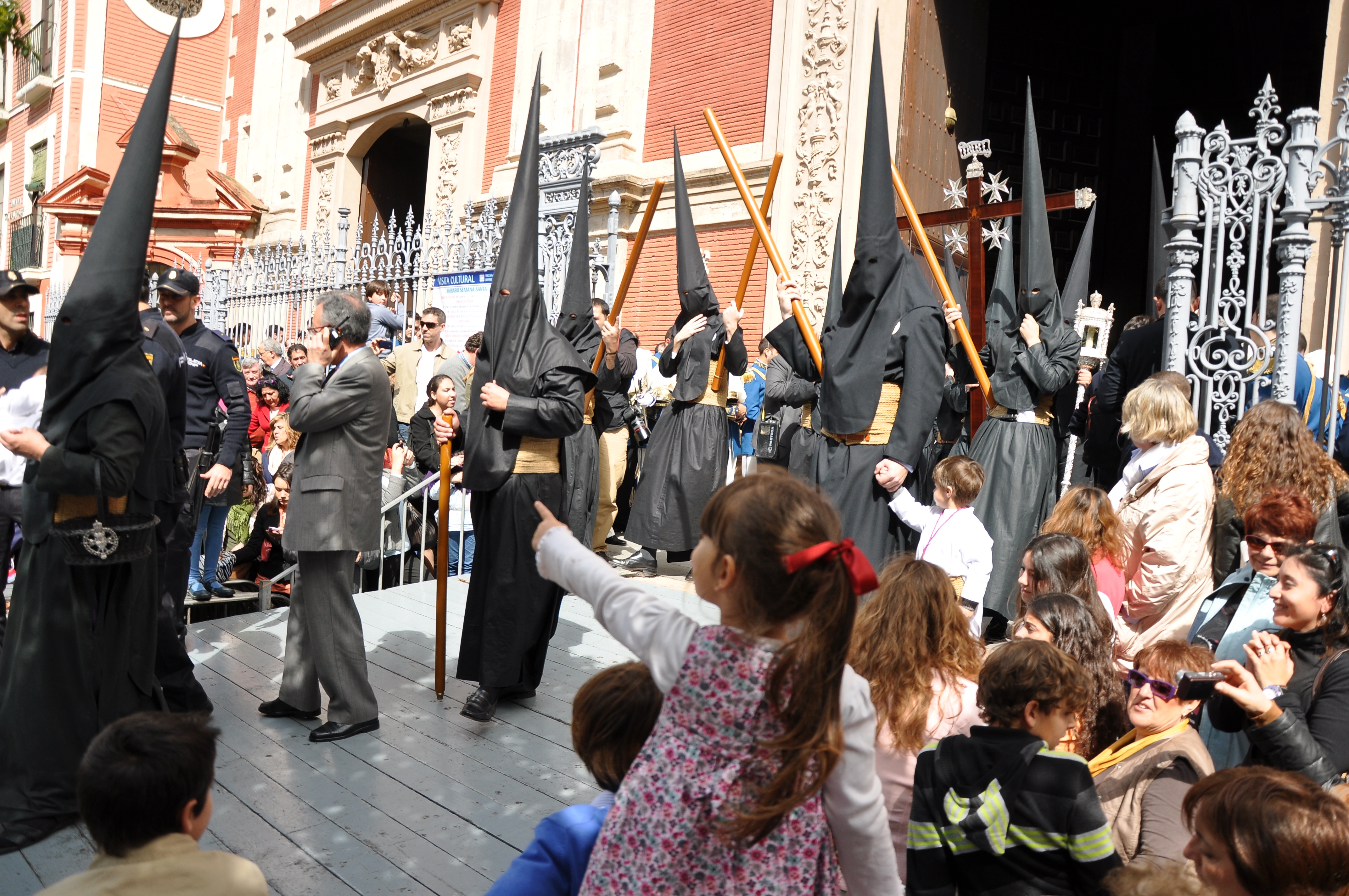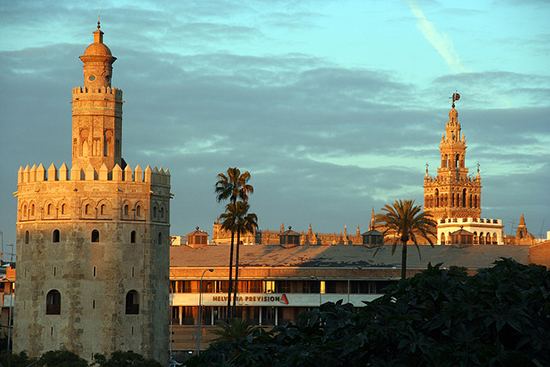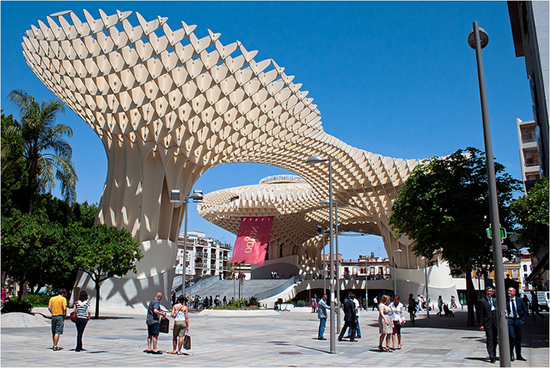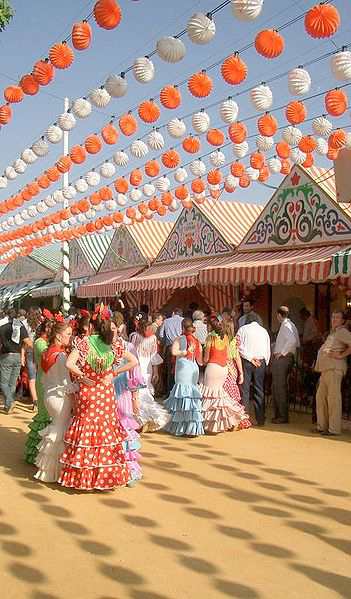ONLY BE SEVILLIAN
Only-Be Sevillian
Artsevilla
‘Sevilla tiene un color especial’ as the song goes… but nothing has ever been said about its shape. Rediscover the city with the I International Contemporary Art Trade Fair.
All About Seville’s Plaza de España
Any avid traveler needs an active imagination. When visiting places and monuments we often wonder, who designed this cathedral? Why did the main tower burn down? How long did it take to build this bridge? And that’s why we need expert guides to tell us all about past events. Well, we’ll be your guide today. Close your eyes and place yourselves in Seville, a century ago. The year 1914 marked the start of all construction work on Plaza de España by architect Aníbal González, whose statue adorns the square today. Designed with the occasion of the Ibero-American Exposition of 1929, the square would not be fully completed until one year before the event. This is a brick monument representative of the regional architecture, characterized by its reflection of the aesthetics of the site, including decorative ceramics, woodwork, cast iron and carved marble. For those not fortunate enough to have visited, Seville’s Plaza de España, it is shaped like an oval over 200 meters in diameter. The oval is circumscribed within an impressive building with a tower at each end of the North and South wings, symbolizing Spain’s embrace over its new world colonies, and facing the Guadalquivir river, which was the way to America. Besides the grand fountain at its center, there is also a canal with four bridges representing the old four kingdoms of Spain (Castile, Leon, Aragon and Navarre). On the inner circumference of the semicircle, we find a series of benches, each of them decorated with a relevant historical event, the coat of arms and the map of each of the forty-eight Spanish provinces. Starting...The Best Tapas in Seville
‘Quien no ha visto Sevilla, no ha visto maravilla.’ (which could roughly be translated as If you’ve not seen Seville, you’re yet to know what wondrous means.) The Andalusian capital is without a doubt the cultural and historic center of the region. From its vibrant and colorful architecture, to its Feria de Abril, Seville is a city you can’t miss out on, no matter the season. And in addition to its famous buildings, its tapas bars are among some of the very best things Seville has to offer. Leaving aside the various different versions regarding the origin of Spanish tapas, there is no doubt they are the ideal solution when looking for a quick, tasty and affordable bite to eat when out with friends. The only difficulty lies in knowing how to choose among the thousands of tapas joints in the city! And to help you save time searching, we’ve compiled our very own selection of what, in our opinion, are some of the most authentic and traditional places to visit. La Taberna. This is a relatively small place decorated with pictures of the many celebrities that have visited it. Its popularity comes as no surprise, as they serve some of the best dishes traditional Sevillian cuisine has to offer. They get extra bonus points for their stylish upbeat servers. You’ll find them on Calle Gamazo 6. La Brunilda Tapas. Centrally located, on Calle Galera 5, La Brunilda serves dishes as tasty and creative as tuna tataki with couscous and vegetables. This modern and cozy venue combines the best of typical Spanish tapas with a touch of delicious innovation;...The Best Towns in Southern Spain
Andalusia: its summer heat, the colors of its streets, its charming little villages, its heavy southern accent, its flamenco dances, its cuisine, its rich history… Just breathtaking! Open your eyes wide and let us take you on a route through some of the prettiest towns in southern Spain. Ronda Ronda, northwest of the province of Malaga, is one of the oldest towns in Spain. The Tajo River crosses Ronda’s old town, dividing it into two parts connected by the Puente Nuevo, a 100 meter tall bridge with picturesque views over the city. The labyrinth-like streets of Ronda are a constant reminder of its Muslim past. Don’t leave without visiting its famous bullring, built in stone. Vejer de la Frontera Vejer de la Frontera is a village in the province of Cadiz, built atop a 190m tall hill, on the banks of the Barbate River. It is known for its walled historic center and the historic-artistic ensemble formed by its castle, with amazing views, and its numerous churches. There is nothing quite like exploring its narrow, steep streets, and delighting in the view of its palm trees and white houses before heading to Plaza de España, with its beautiful fountain, for something to drink. Úbeda Úbeda is a small town in the autonomous community of Jaén, facing the Sierra Mágina massif. This town is regarded as one the maximum exponents of the Spanish Renaissance, and was declared a UNESCO World Heritage Site for its renaissance buildings, such as the palace of Las Cadenas or the church of Santa María de los Reales Alcázares. A short wander through...What to Do in Seville in the Summertime?
Seville… the Giralda, the Plaza de España, the Alcázar, its tapas, its two spring seasons… but also its scorching hot summer! If you’re heading down to Seville during the summer season, you’ll find that it’s just not easy to find activities that enable you to escape the heat. And that is why we want to help you out by suggesting five different plans to make the most of the summer in this city: Open Air Concerts Sevillian summer nights are for open air concerts, and there is plenty to choose from, independently of your taste- there’s indie, flamenco, classical music… The city itself turns into the best of stages, be it in its streets, in the gardens of its palaces such as those of the Alcázar, or on terraces overlooking the city’s emblematic monuments, you are always sure to find live music. At the Isla de la Cartuja (Island of the Charterhouse) you’ll find Terraza Montpensier that plays live music all summer and brings national and international DJs. Always a good alternative when it comes to escaping the heat of the city. Another good option is the terrace of the Rocío Jurado Auditory, also at the Isla de la Cartuja on the Guadalquivir River, and which, this summer, will see the likes of artists like Carmen Boza, Andrés Suárez, Lila Downs or The Skatalites. Open Air Cinema You’ll be able to check the film screenings of Seville’s many open air cinemas, some of them on the city’s rooftops, and the most popular one in the neighborhood of the Diputación. Watch a good movie under the stars. Could there be...What You Didn’t Know about the Seville April Fair
Seville smells of orange blossoms and the albero sand of its fairgrounds. Seville is a special color; a color which, in April, intensifies, attracting thousands upon thousands of visitors from every corner of the globe. The Alumbrao (lighting), and the décor of the casetas at El Real, the music, the elegant flamenco dresses, the art, the rebujitos and the manzanilla are the main protagonists of an age-old celebration that kicks off on Tuesday April 21st. Be sure to mark your calendars because this is truly promising. So if you like flamenco and good eats, you can’t miss out on Seville’s Feria de Abril.

 English
English Français
Français Deutsch
Deutsch Italiano
Italiano Español
Español